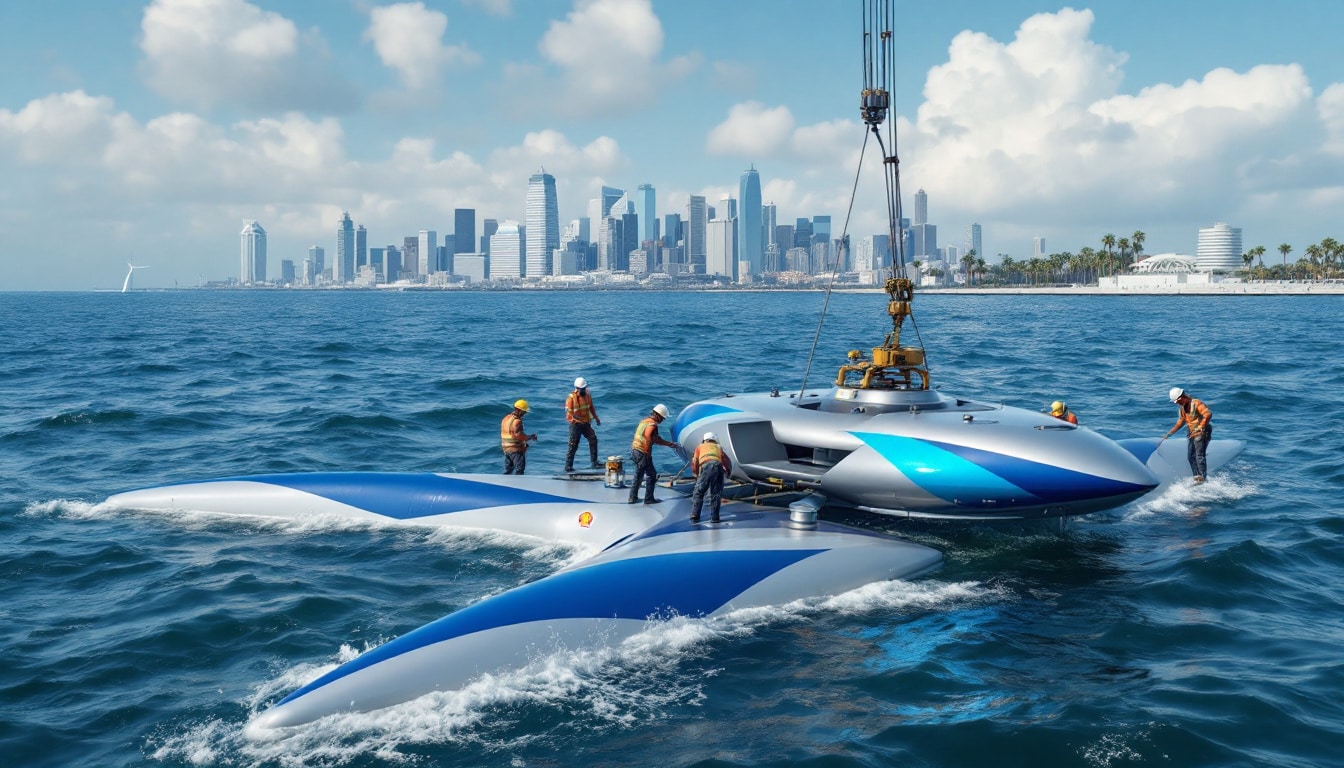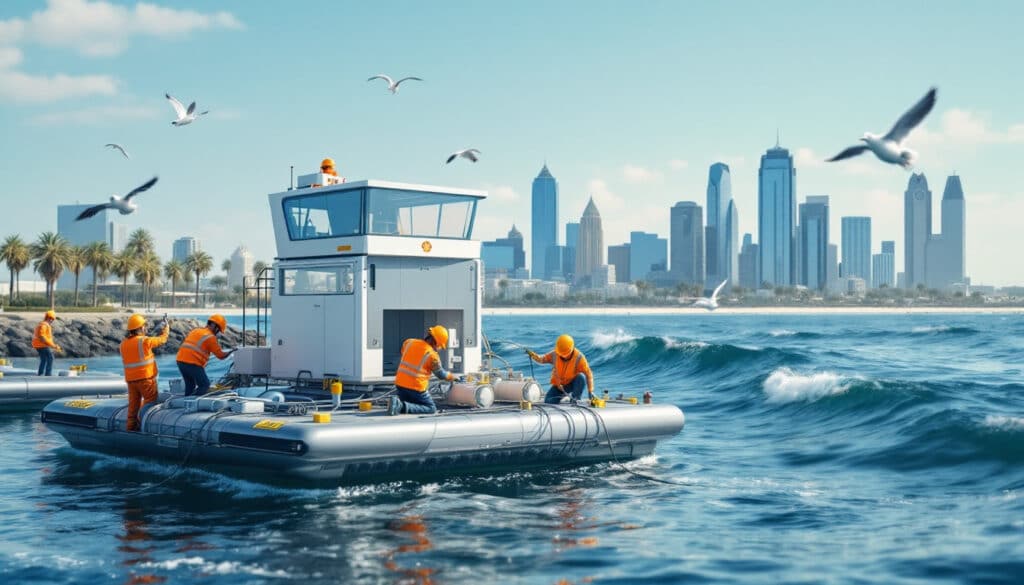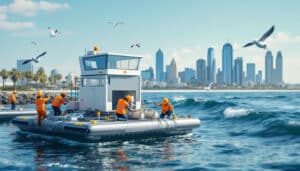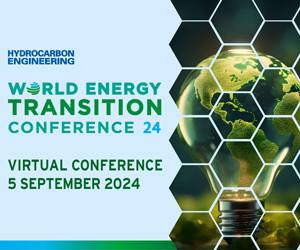Cookies and data are essential for providing and maintaining the services offered. They help to track outages and protect against spam, fraud, and abuse. By measuring audience engagement and site statistics, we understand how our services are used and improve their quality.
If you choose to “Accept all,” we will also use cookies and data to develop and improve new services. This includes delivering and measuring the effectiveness of advertisements. Additionally, we display personalized content based on your settings. On the other hand, if you choose to “Reject all,” we will not use cookies for these additional purposes.

Table of Contents
ToggleHow is Shell progressing in its wave energy pilot project in Los Angeles?
The pilot wave energy project supported by Shell in Los Angeles represents a significant step towards transitioning to renewable energy sources. This innovative initiative aims to test and demonstrate the viability of tidal energy in a dynamic urban environment. By installing a local buoy, Shell seeks to harness the potential of waves to generate electricity sustainably and efficiently.
The buoy, designed specifically for the conditions of the California coast, is equipped with advanced technologies that capture the kinetic energy of the waves and convert it into electrical energy. This device is the result of extensive research and collaborations with experts in marine engineering and renewable technologies. The goal is to create a modular infrastructure that can be deployed in various coastal regions around the world.
The site in Los Angeles was chosen for its proximity to existing energy infrastructure, as well as its favorable climate for marine energy production. Shell works closely with local authorities and neighboring communities to ensure that the project integrates harmoniously into the urban landscape and positively contributes to the local economy.
This initiative aligns with Shell’s broader strategy to diversify its energy portfolio and invest in clean technologies. By supporting projects like this, Shell demonstrates its commitment to sustainability and the fight against climate change. The success of this pilot project could pave the way for larger-scale deployments and wider adoption of wave energy in the future.
What are the benefits of wave energy for Los Angeles?
Wave energy offers numerous benefits, particularly for a coastal metropolis like Los Angeles. First, it provides a renewable and clean source of energy, thereby reducing dependence on fossil fuels and greenhouse gas emissions. This transition to greener energy is essential for achieving the city’s sustainability goals and contributing to the fight against climate change.
Moreover, wave energy is an abundant and predictable resource in the Los Angeles region. The ocean conditions are ideal for marine energy generation, with regular and powerful waves that can be effectively harnessed. Unlike some other renewable energy sources, such as solar or wind, wave energy offers consistent energy production, regardless of weather conditions.
Additionally, the pilot project contributes to job creation and the development of specialized skills within the marine technology sector. The construction and maintenance of the buoys require advanced technical expertise, which stimulates the local economy and fosters innovation. By collaborating with universities and research centers, Shell also promotes knowledge transfer and the development of new technologies in marine energy.
Finally, integrating wave energy into Los Angeles’s electrical grid enhances the city’s energy resilience. By diversifying energy sources, Los Angeles can better respond to fluctuations in demand and potential supply disruptions. This diversification is crucial for ensuring a stable and reliable energy supply in the long term.
What challenges must Shell overcome to succeed in this pilot project?
Despite the numerous advantages, Shell faces several challenges to ensure the success of its wave energy pilot project in Los Angeles. One of the main obstacles is the technical complexity associated with harnessing marine energy. Ocean conditions can be highly variable and sometimes hostile, requiring robust and resilient technologies capable of withstanding storms and wear from saltwater.
Another major challenge is the integration of the energy generated by the buoys into the existing electrical grid. This requires suitable transmission infrastructure and close coordination with grid operators to ensure that the produced energy is distributed efficiently and without interruption. Shell must also ensure that wave energy complies with existing standards and regulations, which may require adjustments and technological improvements.
Environmental impact is also a crucial concern. Although wave energy is a clean source, the construction and operation of the buoys can have repercussions on local marine ecosystems. Shell must conduct thorough environmental impact studies and work with local authorities and communities to minimize potential negative effects. For example, preserving marine biodiversity is essential for ensuring the long-term sustainability of the project.
Furthermore, the initial cost of developing and establishing the necessary infrastructure can represent a significant financial hurdle. Though investments in renewable energy often yield long-term profitability, startup costs can be high. Therefore, Shell must work to optimize costs and demonstrate the economic viability of the pilot project to justify larger-scale investments.
What is the importance of local collaboration for this project?
Collaboration with local stakeholders is essential for the success of Shell’s wave energy pilot project in Los Angeles. Partnering with municipal authorities, local businesses, and coastal communities ensures that the project meets the needs and expectations of the region. This collaborative approach also fosters social acceptance of the project, minimizing resistance and strengthening public support.
Shell is committed to involving stakeholders from the early stages of the project by organizing public consultations and incorporating feedback from residents and local experts. This transparency and openness help build trust and demonstrate that the project is designed to benefit the entire community. Additionally, by collaborating with local universities and research centers, Shell can leverage local expertise and foster technological innovation in marine energy.
Collaboration with local authorities also allows for more effective navigation through regulations and administrative procedures, thus facilitating project implementation. By partnering with environmental protection organizations, Shell can ensure that necessary measures are taken to preserve marine ecosystems and reduce the project’s ecological footprint.
Finally, the support of local communities is crucial for the project’s long-term sustainability. By creating jobs and contributing to the local economy, Shell can strengthen ties with residents and foster a sense of ownership and pride in the project. This positive dynamic is essential for maintaining engagement and ensuring the long-term success of the initiative.
What are the environmental impacts of the local buoy?
The installation of a local buoy for wave energy production in Los Angeles presents environmental impacts to consider. While this type of energy is generally clean and renewable, marine infrastructures can disrupt marine habitats and influence local wildlife. It is therefore crucial for Shell to implement protective measures to minimize these effects.
The buoys must be designed to minimize disruptions for marine species. This includes using non-toxic and durable materials, as well as designing structures that allow free movement of marine animals. Environmental impact studies are conducted to assess potential effects and adjust practices accordingly.
Moreover, managing sludge and other debris generated by the operation of the buoys is an important aspect to consider. Shell must ensure that these residues are disposed of responsibly to avoid any contamination of marine ecosystems. Sophisticated filtration and cleaning systems are integrated into the design of the buoys to ensure that surrounding water remains clean and healthy.
Wave energy also contributes to reducing greenhouse gas emissions by replacing fossil energy sources, which is beneficial for air quality and combating global warming. By adopting sustainable practices and investing in environmentally friendly technologies, Shell strives to maximize the ecological benefits of its pilot project.
Finally, the preservation of marine biodiversity is a priority for Shell. By collaborating with marine biologists and ecologists, the company ensures that the project meets the highest environmental standards and contributes to the protection of local ecosystems. Raising awareness and educating local communities about the importance of marine biodiversity also play a key role in the project’s success.
What are the next steps for the pilot project?
After establishing and testing the local buoy, Shell plans to move to the next phase of its wave energy pilot project in Los Angeles. The next steps include optimizing the technologies used and collecting accurate data on system performance. This analysis will identify strengths and areas for improvement to ensure maximum efficiency when deployed on a larger scale.
Once technical optimizations are completed, Shell plans to expand the project by installing multiple buoys along the coast of Los Angeles. This expansion will allow for significant energy generation and demonstrate the infrastructure’s ability to support complex urban electrical networks. This phased deployment is essential for testing the scalability of the solution and ensuring its economic viability.
At the same time, Shell will work to strengthen partnerships with local actors, including technology companies and academic institutions. These collaborations aim to foster continuous innovation and integrate the latest scientific and technological advances into the project. Establishing these partnerships is crucial to staying at the forefront of developments in the marine energy sector.
Furthermore, Shell plans to launch awareness and education programs to inform the public about the benefits of wave energy and the importance of marine sustainability. These initiatives aim to strengthen community support and encourage broader adoption of renewable technologies. Transparency and communication are key elements in maintaining trust and engagement among stakeholders throughout the project.
Finally, Shell continues to seek opportunities to extend the pilot project to other coastal regions. By leveraging lessons learned in Los Angeles, the company can adapt and replicate the model in different environments, thus contributing to the global transition towards clean and sustainable energy sources. International expansion is a long-term goal that positions Shell as a leader in marine energy.
What is the impact of this project on the marine energy market?
Shell’s wave energy pilot project in Los Angeles has the potential to transform the marine energy market by demonstrating the feasibility and economic benefits of tidal technologies. By succeeding with this prototype, Shell paves the way for broader adoption of wave energy, influencing energy policies and encouraging other companies to invest in this sector.
The technological innovations developed as part of this project can serve as a model for other similar initiatives around the world. The successes and challenges encountered in Los Angeles will provide valuable lessons for improving future installations and optimizing deployment processes. This momentum promotes an acceleration of research and development in the field of marine energy.
Additionally, by contributing to the diversification of energy sources, this project enhances the resilience of the energy market in the face of fluctuations in fossil fuel prices and geopolitical instability. Wave energy offers a stable and predictable alternative, essential for ensuring long-term energy security. This stability attracts investors and stimulates investments in renewable infrastructures.
Shell’s commitment to this pilot project also signifies a paradigm shift in the energy sector, where traditional companies are beginning to invest heavily in renewable technologies. This transition is crucial to meeting global carbon emission reduction targets and fostering a green and sustainable economy. Strategic partnerships with public and private actors are essential to accelerate this transformation.
Moreover, the pilot project enhances Shell’s competitiveness in the global renewable energy market. By developing innovative technologies and demonstrating their effectiveness, Shell positions itself as a key player in marine energy. This strategic position allows it to actively participate in discussions and decisions regarding the global energy future, thus influencing trends and regulations in the sector.
The success of this pilot project may also inspire other companies to explore similar energy solutions, thereby creating a positive ripple effect in the wave energy market. By sharing results and best practices, Shell contributes to the continuous improvement of tidal technologies and their global adoption, accelerating the transition to a cleaner and more sustainable energy future.
What are the expected economic benefits of this project?
Shell’s wave energy pilot project in Los Angeles promises significant economic benefits for both the company and the surrounding region. First, the establishment of the local buoy creates local jobs in construction, engineering, and maintenance. These job opportunities contribute to strengthening the local economy and providing advanced technical skills to workers in the area.
Furthermore, the development of innovative technologies for marine energy stimulates innovation and competitiveness in the renewable energy sector. Investments in research and development enable the creation of more efficient and cost-effective solutions, thus reducing energy production costs and increasing long-term profitability. These technological advancements can also be exported to other markets, generating additional revenue for Shell.
The project also contributes to diversifying Shell’s revenue sources, reducing its dependence on fossil fuels and increasing its resilience against fluctuations in traditional energy markets. By investing in renewable projects, Shell secures its future revenue sources and ensures its longevity in a global context of energy transition.
For the Los Angeles region, the adoption of wave energy can lead to long-term reductions in energy costs due to the stable and renewable supply it offers. This translates into lower electricity bills for local residents and businesses, thereby enhancing purchasing power and fostering sustainable economic growth.
Additionally, the pilot project paves the way for new business opportunities and the emergence of startups specializing in tidal technologies and renewable energies. This entrepreneurial activity stimulates the local economy and contributes to the creation of a dynamic ecosystem conducive to innovation and economic growth.
Finally, economic benefits are also manifested through the attraction of new investments in the region. The demonstrated successes of the pilot project encourage other companies and investors to explore the opportunities offered by marine energy, thereby creating a virtuous cycle of investment and economic development.
How does this project fit into Shell’s global initiatives?
The wave energy pilot project in Los Angeles fits perfectly into Shell’s overall strategy to diversify its energy sources and reduce its carbon footprint. By investing in renewable and innovative technologies, Shell meets growing expectations for sustainability and environmental responsibility.
This initiative is part of Shell’s efforts to achieve its Carbon Neutrality targets by 2050, as outlined in its strategic plan. By exploring and developing solutions in the field of marine energy, Shell actively contributes to the global energy transition and the reduction of greenhouse gas emissions.
Moreover, the pilot project demonstrates Shell’s commitment to innovation and advanced research. By collaborating with technology partners, academic institutions, and marine engineering experts, Shell promotes the development of new technologies that can revolutionize the energy sector. This collaborative approach strengthens Shell’s position as a leader in renewable energy.
Additionally, this project aligns with Shell’s global initiatives aimed at promoting the circular economy and maximizing the sustainable use of natural resources. Wave energy, as a renewable resource, is an essential component of this strategy, enabling a balance between economic development and environmental preservation.
The pilot project in Los Angeles also serves as a model for other similar initiatives around the world. By successfully implementing this prototype, Shell can replicate and adapt this approach in different coastal regions, thus contributing to the global adoption of marine energy technologies. This international expansion is crucial for achieving global energy transition and emission reduction goals.
Finally, this project reflects Shell’s commitment to creating shared value for both the company and local communities, as well as the environment. By investing in sustainable technologies and collaborating with stakeholders, Shell ensures a cleaner and more prosperous future for all while strengthening its position in the global energy market.
Future prospects for wave energy
Wave energy represents one of the most promising pathways for the future of renewable energies. Thanks to pilot projects like the one led by Shell in Los Angeles, the prospects for this technology continue to expand and sharpen. Continuous technological advancements and increasing investments in this field are positive indicators for its future adoption.
Ongoing improvements in buoy design and conversion systems are enhancing the efficiency and profitability of marine energy. New innovations, such as more resilient materials and advanced energy storage systems, are making these technologies increasingly competitive compared to traditional energy sources. These advancements are essential for making wave energy accessible and viable at a large scale.
Globally, governments and international organizations are increasingly recognizing the potential of wave energy in the global energy transition. Supporting policies, grants, and tax incentives are being established to encourage the development and adoption of these technologies. This institutional recognition is crucial for accelerating the implementation of large-scale projects and attracting more private investment in the sector.
Furthermore, the growing public awareness of environmental issues and the necessity of transitioning to sustainable energy sources plays a key role in the adoption of wave energy. Awareness campaigns and educational initiatives help inform citizens about the benefits of these technologies, thereby creating increased demand for clean and renewable energy solutions.
Finally, international collaboration is essential for overcoming the technical and financial challenges associated with marine energy. By sharing knowledge, best practices, and resources, countries and companies can accelerate the development of this technology and maximize its benefits. Strategic partnerships and global initiatives are necessary to realize the full potential of wave energy and ensure a fair and sustainable energy transition worldwide.
In conclusion, wave energy is emerging as a key solution for a sustainable energy future. With the support of innovative pilot projects like Shell’s in Los Angeles, this technology is poised to become an essential component of the global energy mix, offering a clean, renewable, and reliable alternative to traditional energy sources.
What is Shell’s status in deploying wave energy in Europe?
Alongside its project in Los Angeles, Shell is also active in developing wave energy in Europe. The company is collaborating with Carnegie Clean Energy to advance the deployment of wave energy across the continent. This initiative aims to harness the potential of European coastlines to generate clean and renewable energy while supporting the European Union’s carbon neutrality goals.
In Europe, varied maritime conditions offer unique opportunities for installing buoys tailored to different regions. Shell, in partnership with local experts and research institutions, is working to adapt wave energy technologies to be effective in diverse environments, ranging from the turbulent waters of the Atlantic to the calmer seas of the Mediterranean.
Shell’s commitment in Europe is also reflected in its investments in research and development for new tidal technologies. By supporting innovative projects and collaborating with startups and technology companies, Shell contributes to the growth of marine energy in Europe, creating a favorable ecosystem for innovation and sustainable development.
Integrating wave energy into the European energy network reduces dependence on fossil energy sources and fosters a transition towards more resilient and environmentally friendly energy systems. This transition is essential for meeting Europe’s climate goals and supporting green economic growth.
Building on the successes of its project in Los Angeles, Shell is well-positioned to expand its initiatives in wave energy in Europe. The lessons learned and technologies developed in Los Angeles serve as a solid foundation for innovation and expansion in Europe, ensuring that future projects benefit from the best practices and the latest technological advancements.
To maximize the impact of its projects in Europe, Shell also emphasizes training and development of local skills in the field of marine energy. By collaborating with universities and training centers, Shell ensures that the European workforce is well-prepared to support the development and maintenance of wave energy infrastructure, thus contributing to a dynamic and sustainable local economy.
In conclusion, Shell’s commitment to deploying wave energy in Europe reflects its determination to promote sustainable energy solutions on a global scale. By combining technological innovation, strategic collaboration, and continuous investment, Shell plays a key role in the global energy transition and in promoting a cleaner and more sustainable future.
What are experts’ feedback on this pilot project?
Expert feedback on Shell’s wave energy pilot project in Los Angeles is largely positive, highlighting its potential to transform the energy landscape and promote innovative tidal technologies. Many renewable energy specialists hail the initiative as a major advancement in the field of marine energy.
According to Dr. Sophie Martin, professor of renewable energy at the University of California, “This pilot project is an exemplary model of the practical application of wave energy technologies. It demonstrates the feasibility and efficiency of these systems in a complex urban environment, paving the way for future deployments on a larger scale.” She adds that “data collected from this project will provide valuable insights for optimizing tidal technologies and integrating them into existing energy networks.”
For his part, Mr. Jean Dupont, marine engineering expert at Revolution Marine Energy, emphasizes that “Shell’s integrated approach, combining advanced technology and local collaboration, is essential for the success of wave energy projects. This model could serve as a reference for other companies seeking to invest in sustainable energy solutions.”
The reduced environmental impact and commitment to preserving marine biodiversity are also praised by ecologists. Marie Legrand, a marine biologist, states that “Shell has taken important measures to minimize the ecological impact of its buoy. This pilot project shows that it is possible to develop wave energy technologies while respecting and protecting marine ecosystems.”
On the other hand, economists highlight the long-term economic benefits of the project. According to Pierre Lambert, an economist specializing in renewable energy, “The initial investment in this type of project may seem high, but the long-term economic benefits, such as job creation and reduced energy costs, more than justify the expenditures. Additionally, the technological innovation developed here can generate significant returns on investment for Shell and the involved partners.”
In summary, experts agree that Shell’s pilot project in Los Angeles is a pioneering initiative that could catalyze the adoption of wave energy on a global scale. Positive feedback from specialists reinforces the credibility and significance of this project in the transition to more sustainable and environmentally friendly energy sources.
What lessons can be learned from this initiative for other renewable energy projects?
Shell’s wave energy pilot project in Los Angeles offers numerous valuable lessons for other initiatives in the field of renewable energies. One of the main lessons is the importance of collaboration among various stakeholders, including companies, local authorities, communities, and technical experts. This collaboration fosters a holistic and integrated approach, essential for the success of complex energy projects.
Another key lesson concerns the necessity of continuous technological innovation. The challenges encountered during this pilot project highlighted the importance of adapting and constantly improving the technologies used. Investing in research and development allows overcoming technical obstacles and optimizing the performance of wave energy systems, making these technologies more effective and profitable.
Proactive management of environmental impacts is also crucial. Shell has demonstrated that even renewable energy projects can have repercussions on local ecosystems, and that managing them responsibly is essential. Conducting thorough impact studies and implementing environmental protection measures are indispensable for ensuring the sustainability of projects and gaining local community acceptance.
Furthermore, flexibility and adaptability in the design and implementation of projects are essential. Each site has unique characteristics, and it is important to adjust technologies and strategies according to local conditions. This adaptability enables optimizing energy efficiency and maximizing the benefits for each specific project.
Optimizing costs is another important lesson. Although initial investments in renewable energies may be high, it is crucial to seek ways to optimize costs through technological innovation, economies of scale, and strategic partnerships. This makes projects more economically viable and attracts more private investments.
Finally, the project highlights the importance of transparency and communication with all stakeholders. Informing the public and partners about the project’s objectives, progress, and challenges fosters trust and engagement, which is essential for the long-term success of energy initiatives.
By applying these lessons, other renewable energy projects can increase their chances of success and contribute significantly to the global energy transition. Shell’s project in Los Angeles serves as an inspiring model for future initiatives aimed at developing sustainable and innovative energy solutions.
[#Innovation]
— Gouvernement Monaco (@GvtMonaco) November 5, 2019
Hier, le #gvtmonaco et l'#SBMOffshore ont présenté une étape clé dans le projet #WaveEnergyConverter S3®, lequel consiste à exploiter l’énergie des vagues pour produire de l’électricité. pic.twitter.com/az0F9eoun9









